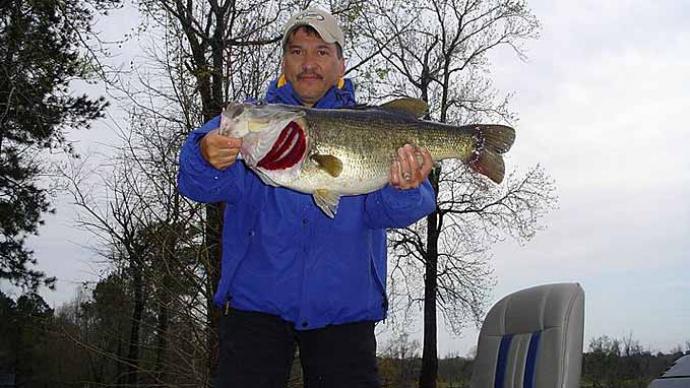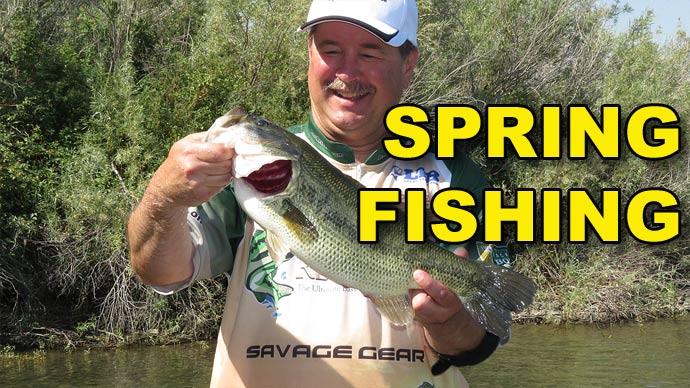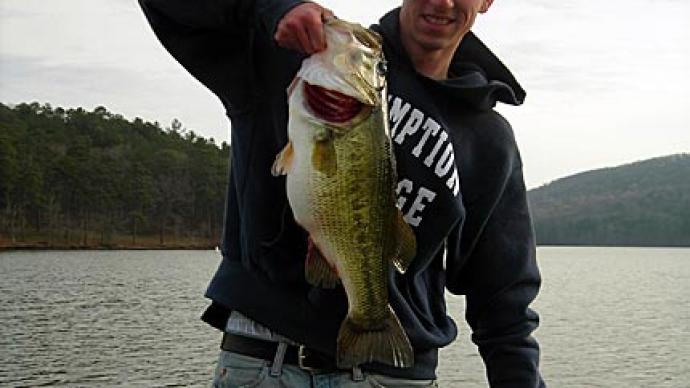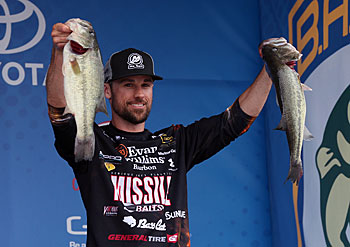
Bass anglers have rituals before every fishing trip. They ensure their tow vehicle and trailer are ready for the road. They check their boat, charging the batteries and — hopefully — remembering the drain plug. Then there is tackle to purchase and prep, fishing reports to peruse, and sandwiches to make.
Anglers also check the weather forecast; the one thing they don’t want to see mentioned is a cold front. Unfortunately, they aren’t a rare occurrence. It always seems like Mother Nature schedules at least one per fishing trip. And while they cause anglers concern during any season, springtime cold fronts are the most feared.
Spring means bass and anglers are ready to go after a long winter. The last thing either wants is a weather-related delay. Cold fronts drop the water temperature, and the storms associated with their arrival cause enough commotion to give bass lockjaw.
But, according to three Bassmaster Elite Series anglers, springtime cold fronts are no reason to cancel your trip. Make adjustments based on where the bass are in their spawning run, and you’ll be back to catch them sooner rather than later.
What is a cold front?
Weather is current atmospheric conditions that reflect the characteristics of the air mass that is currently in place. A front is the leading edge of an air mass. There are two types: cold and warm. The name describes the temperature of the air mass relative to the current temperature. Cold fronts, for example, are the leading edge of colder air masses.
Depending on the air mass's moisture, fronts can bring rain, thunderstorms, or even tornadoes. Cold fronts usually move from northwest to southeast, bringing gusty and shifting winds. The strongest ones are in spring and fall.

That atmospheric upheaval alters the bass’s world. Wind muddies the water and relocates the food supply for baitfish, which, along with bass, follow. Cold rain and air lower the water temperature, and changing air pressure gives bass something like a stomach ache, said Bassmaster Elite Series angler, Shaw Grigsby.
Grigsby credits friend and fellow tournament competitor Ken Cook, who passed away in 2016, as the source for that description. A fisheries biologist for the state of Oklahoma before launching a professional fishing career that included six B.A.S.S. wins — one of which was the 1991 Classic on the Chesapeake Bay — Cook understood how their environment controls bass. While you may catch a few right after a cold front, especially with subtle finesse techniques, Shaw said most bass aren’t interested in doing much.
A cold front’s effect on bass changes with latitude. Tim Horton, whose latest of five B.A.S.S. wins was a springtime Elite Series event on Florida’s Lake Okeechobee, said they are more powerful the farther south you fish. “In Florida, it devastates them,” he said. Grigsby agrees: “The worst fish for a cold front is a Florida bass.” But you don’t have to face that issue in the Sunshine State. Grigsby said many states stocked Florida-strain bass in hopes of growing bigger bass. Though, if they breed with Northern-strain largemouth, their cold-front tolerance improves.
How bass react to a cold front also depends on the season. Summertime cold fronts are often the worst, said John Crews, who won a springtime Elite Series tournament on the California Delta. He said summertime bass are accustomed to long stretches of stable weather. So, when a cold front arrives, the change feels even more significant to them.
Crews said bass have a milder reaction to cold fronts in spring. “That time of year, they are used to having cold fronts,” he said, usually about once a week. But they still change the game depending on where the bass are in the spawning process — migrating from deep to shallow or already on their beds.
Moving bass
Prespawn bass provide some of the best and most consistent fishing of the year. They are at their heaviest weight, schooled up, more active with rising water temperatures, and found in predictable locations. The last include bottom contours, such as points and creek channels, which Horton said bass follow to spawning flats from deeper winter holes. They use those same features on the way back to deeper summer haunts.
Finding these “highways” is relatively simple. They are easily seen on maps, especially electronic versions that use color to differentiate depths. Horton said banks that drop into the water at 45 degrees are a giveaway, too.
Crews said the arrival of a cold front during prespawn migration creates no more than a hiccup in bass travel plans. It will most likely push them toward deeper water or into thicker cover such as brush or aquatic vegetation. But with a few slight adjustments, either location or heavier lure, you can keep catching them. And they’ll resume their migration with the next warm spell.
This cold-front resiliency is due to water depth, Grigsby said. While colder air temperatures cool the water’s surface, the impact lessens with depth. They also are insulated from barometric pressure changes. “Once you get around 8 feet, they are better off, even if it is crystal clear water,” he said.
Bedding bass
The game changes once bass make their spawning beds. They become so focused that not even a significant environmental change can budge them. Grigsby recalls a tournament on Kerr Reservoir, which lies along the North Carolina-Virginia line and is known as Buggs Island to some anglers. Rain fell by the bucket at that springtime contest, raising the water level by about 10 feet. While bass moving into spawn made beds in the newly flooded shallows, those that settled down before the rain stayed in more than 10 feet of water.
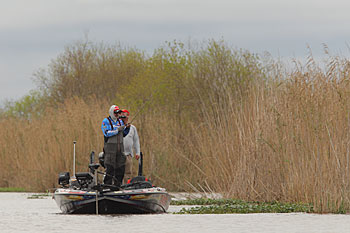
Several factors drive that commitment. Horton says water temperature is probably the most important, especially in shallow water. “If the water gets below 55 degrees, [bass] will leave [their spawning beds],” he said. “If it stays above that, they will stay on their beds.”
Crews also believes water temperature is a prime indicator of whether bass will leave their beds. “[A cold front] can knock back a big percentage of those,” he said. “But if the water temperature is warm enough, many of them stay. I’ve seen it where the water temperature is in the low 60s, then it goes down to 54, and they’re still there.”
Bass won’t go far if a cold front pushes them from their spawning beds. Horton finds the closest structure, which often is a secondary point in 6 to 10 feet of water along their migration route. He’ll fish a crankbait, slowing his retrieve to match the more challenging conditions.
Grigsby said bass committed to spawning won’t leave the immediate area. “I used to go yearly to one little place with crystal clear water,” he said. “I would fish a week solid, every day — cold fronts, rain, wind — and I would watch how fish would react on the bed.” After a strong cold front’s arrival, bass left their beds one year. He saw where one went in the clear water: an adjacent patch of muck, whose dark color absorbed more solar energy, warming the water around it. But it didn’t stay long. “I returned later that afternoon, the sun beating down but still cold out, and it was back sitting on its bed,” he said.
Bass that stay on their spawning beds after a cold front become more fussy than usual. “You may have been able to catch them on the first couple of pitches [before the cold front], but now it’s a situation where you have to slow down,” Horton said. “The water temperature usually drops after a cold front. That changes their metabolism; they just aren’t as active.”
But how much their attitude is adjusted depends on how much the water temperature changes and in which direction. “It may be 60 degrees and may have warmed to that from 55, and they are active,” Horton said. “If it was 70 and cooled to 60, they aren’t going to be as active. It’s still 60, but it’s a different 60, so to speak.”
Crews said post-cold front springtime bass are spooky, too. So, he keeps his boat farther away and makes longer casts that land softly. While his approach needs to be stealthy, sometimes his lure choice isn’t. “When a cold front rolls over bass that have already made their beds, a jerkbait becomes a great lure to use,” he said. “It’s like they revert to prespawn.”


